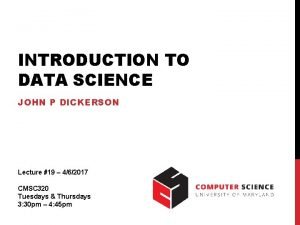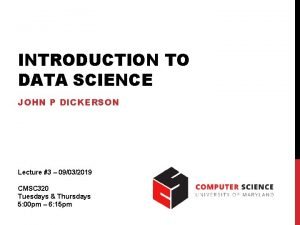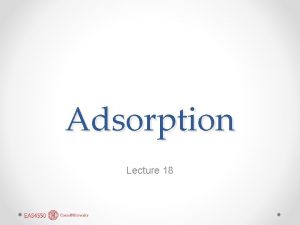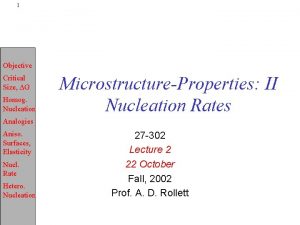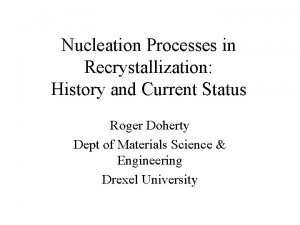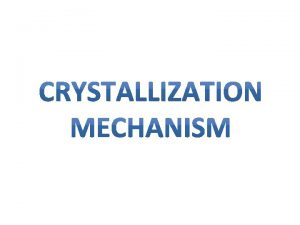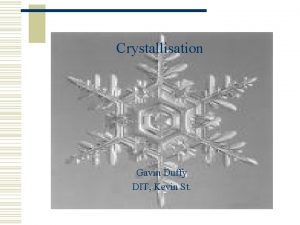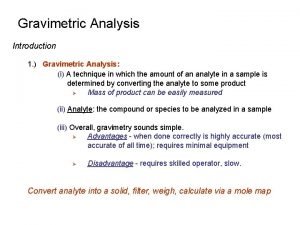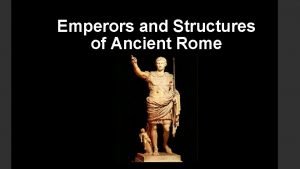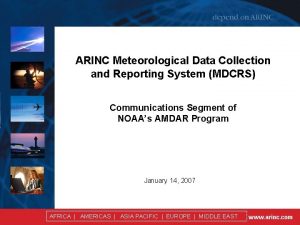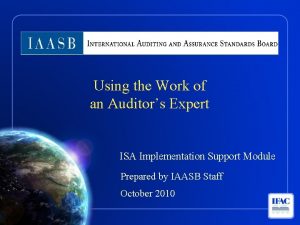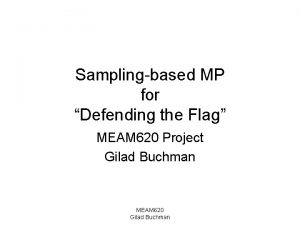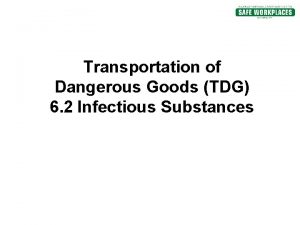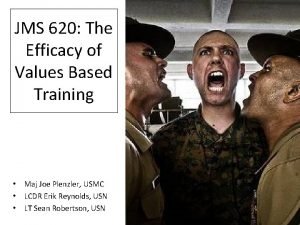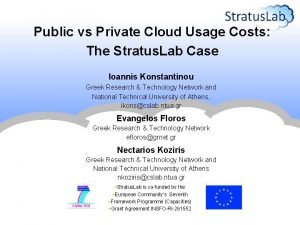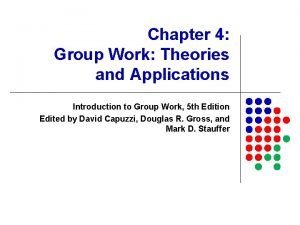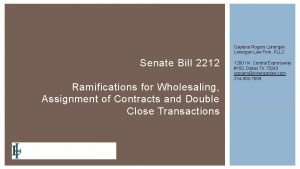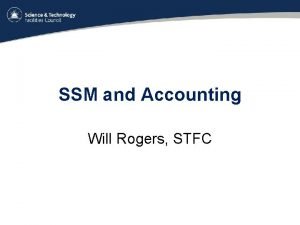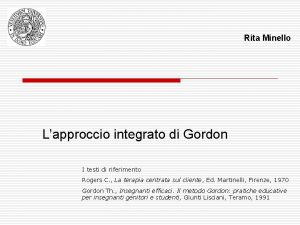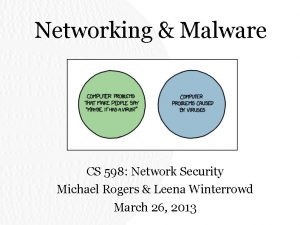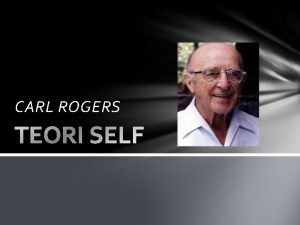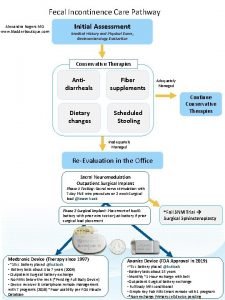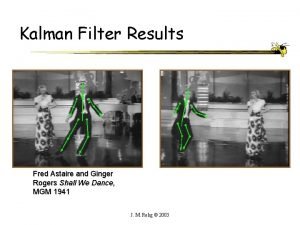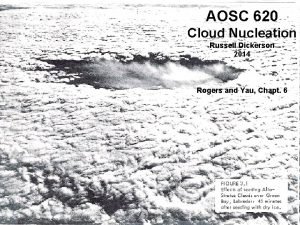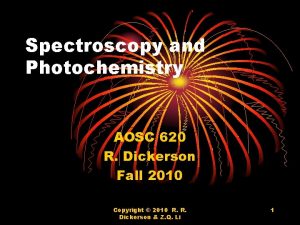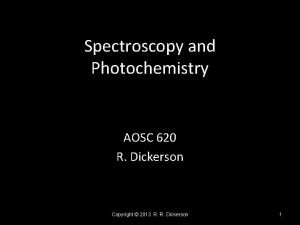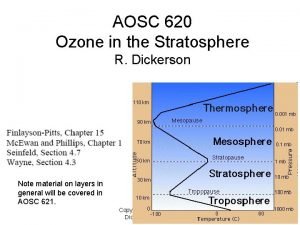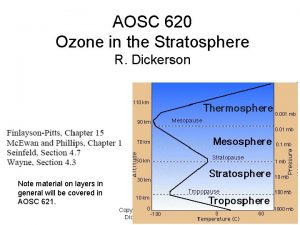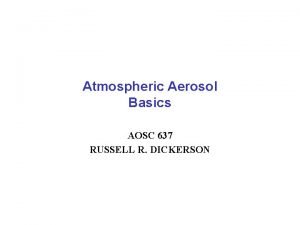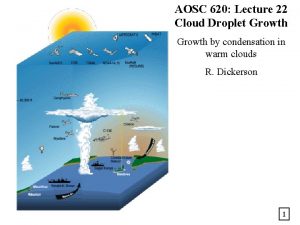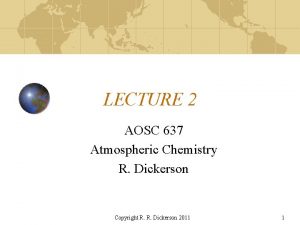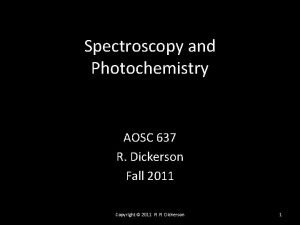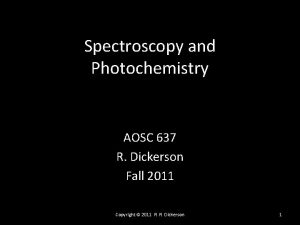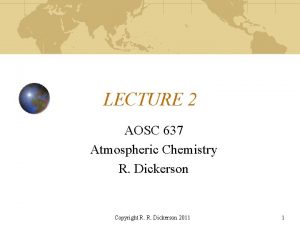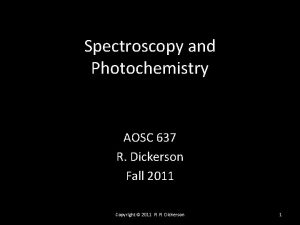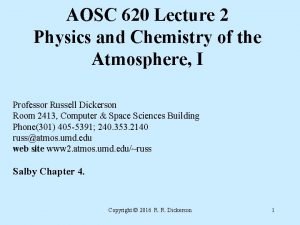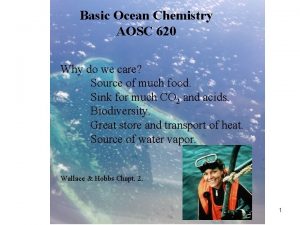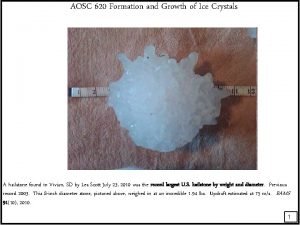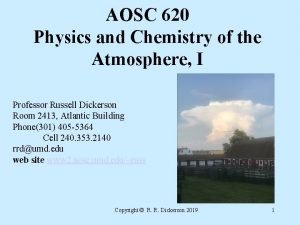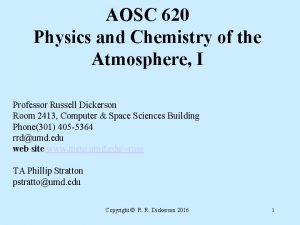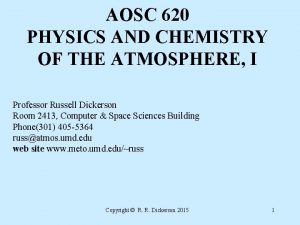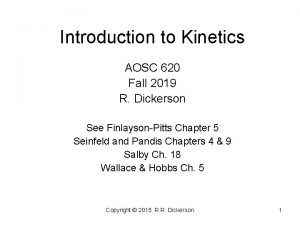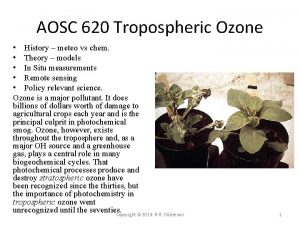AOSC 620 Cloud Nucleation Russell Dickerson 2010 Rogers















































- Slides: 47

AOSC 620 Cloud Nucleation Russell Dickerson 2010 Rogers and Yau, Chapt. 6 Copyright © 2009 R. R. Dickerson & Z. Q. Li 1

Opposing Effects of aerosols on Clouds and Precipitation (Rosenfeld et al. , Science 2008) Radiative Effects: ● Aerosols aloft shield the Earth’s surface from radiation and stabilize the atmosphere wrt convection and the moisture is advected away. (Park et al. , JGR, 2001; Ramanathan et al. , Science, 2001) ● Increased numbers of CCN slow the conversion of droplets into raindrops and inhibit precipitation, but ingestion of large particles such as sea salt appears to enhance precip. (Radke et al. , Science, 1989; Rosenfeld et al. , Science, 2002) ● The water vapor is conserved so suppression of precip here Copyright © 2009 R. R. Dickerson & means more rain there. Z. Q. Li 2

The Rain according to Rosenfeld (microphysical effects) ● The extra CCN in hazy air make for more, smaller droplets in the early stages of a convective cloud. ● The smaller droplets travel higher and more reach colder levels where they are more likely to release latent heat of freezing and increase buoyancy – haze means more instability for the same amount of rain. ● Even though aerosols slow the conversion of cloud droplets into rain drops, convection is eventually invigorated. ● With cold-based clouds (< 0 o. C) most of the water is frozen already and there is no enhancement of precip. Copyright © 2009 R. R. Dickerson & Z. Q. Li 3

Fig. 2. Evolution of deep convective clouds developing in the pristine (top) and polluted (bottom) atmosphere Published by AAAS D. Rosenfeld et al. , Science 321, 1309 -1313 (2008)

Wet (Pseudo-Adiabatic) Parcel Theory (no mixing). ● If all the water in excess of the saturation vapor pressure immediately condenses and precipitates out, then buoyancy is zero all the way up; this is the reference for CAPE calculations. ● If all the water is held in the cloud, then buoyancy becomes more negative with altitude. ● If all the water in excess of the saturation vapor pressure immediately condenses and freezes at T < – 4 o. C then buoyancy is enhanced. ● If precip is suppressed until the parcel reaches T = – 4 o. C then buoyancy is enhanced further. The following figure shows an example with the LCL at 960 h. Pa and 22 o. C.

Fig. 3. The buoyancy of an unmixed adiabatically raising air parcel Energy released in J kg-1. Published by AAAS

Who wins – radiation or microphysics? Particles in the accumulation mode with a diameter around 500 nm are most effective at increasing AOT, but CCN can be almost any size – it is the number that matters. Does CCN correlate with AOT? Copyright © 2009 R. R. Dickerson & Z. Q. Li 7

Fig. 1. Relations between observed aerosol optical thickness at 500 nm and CCN concentrations at supersaturation of 0. 4% from studies where these variables have been measured simultaneously, or where data from nearby sites at comparable times were available Published by AAAS D. Rosenfeld et al. , Science 321, 1309 -1313 (2008)

Who wins – radiation or microphysics? ● From this empirical relationship we can estimate the number of CCN as a function of AOT. ● If the count of CCN is 104 cm-3 then AOT ~ 1. 0 and radiation reaching the Earth’s surface is reduced by an efolding. ● CAPE reaches a maximum at CCN ~ 1200 cm-3 (AOT ~ 0. 25) ; adding more aerosols will inhibit convection. Bell (GSFC) et al. , (JGR, 2008) showed a weekday/weekend effect.

Fig. 4. Illustration of the relations between the aerosol microphysical and radiative effects D. Rosenfeld et al. , Science 321, 1309 -1313 (2008) Published by AAAS

Who wins – radiation or microphysics? ● From this empirical relationship we can estimate the number of CCN as a function of AOT. ● If the count of CCN is 104 cm-3 then AOT ~ 1. 0 and radiation reaching the Earth’s surface is reduced by an efolding. ● CAPE reaches a maximum at CCN ~ 1200 cm-3 (AOT ~ 0. 25) ; adding more aerosols will inhibit convection. Bell (GSFC) et al. , (JGR, 2008) showed a weekday/weekend effect.


Copyright © 2009 R. R. Dickerson & Z. Q. Li 13

Phase Change & Nucleation Process (inhibited by surface tension) Vapor Liquid Condensation Evaporation Deposition Sublimation Freezing Melting Copyright © 2009 R. R. Dickerson & Z. Q. Li Liquid Solid 14

Condensation • In theory, a cloud droplet may not be formed until water vapor is over saturated by a few hundreds per cent. • In nature, super-saturation rate rarely exceeds a few tenths per cent. • The reason lies in the presence of plentiful of water cloud nuclei. Copyright © 2009 R. R. Dickerson & Z. Q. Li 15

Deposition • In theory, a cloud droplet may be frozen at a temperature at 0 o. C. • In nature, super-cooled water droplets of temperature well below the freezing point are often observed. • The reason lies in the lack of ice water cloud nuclei. Copyright © 2009 R. R. Dickerson & Z. Q. Li 16

The coverage of this lecture • • • Derivation of equilibrium water vapor pressure for a small droplet of pure water vs pure bulk water; -Homogenous nucleation Derivation of equilibrium water vapor pressure for a small droplet of solution water vs pure water. -Heterogeneous nucleation Aerosol and CCN Copyright © 2009 R. R. Dickerson & Z. Q. Li 17

Questions to be addressed: 1. How is an embryonic cloud droplet formed and maintained? 2. Why do cloud droplets have a rather narrow range in size? 3. How can a cloud exist for certain period of time? Copyright © 2009 R. R. Dickerson & Z. Q. Li 18

Homogeneous Nucleation For a droplet to form by condensation from the vapor, the surface tension, s, must be overcome by a strong gradient of vapor pressure. The Clausius-Claperon equation describes the equilibrium condition for bulk water and its vapor, which does not apply to small droplet. * Surface tension = work required to increase surface area by one unit. * Store potential energy. * Volume of liquid tends to assume minimum area-to-volume. * Small masses Spherical droplets. Copyright © 2009 R. R. Dickerson & Z. Q. Li 19

Copyright © 2009 R. R. Dickerson & Z. Q. Li 20

Copyright © 2009 R. R. Dickerson & Z. Q. Li 21

Surface tension causes internal pressure The surface tensions for a solute is lower than that of pure water by up to one-third, which. Copyright was attributed to dissolved organics or ions. © 2009 R. R. Dickerson & 22 Z. Q. Li

Derivation of the Kelvin (1870) Equation - Curvature effect on saturation • Surface energy associated with curved surface has impact on equilibrium vapor pressure and rate of evaporation. • Let equilibrium vapor pressure over a flat surface be es. • And over a curved surface be esr. • Consider droplet in equilibrium with environment, temperature = T and vapor pressure = ec Copyright © 2009 R. R. Dickerson & Z. Q. Li 23

Copyright © 2009 R. R. Dickerson & Z. Q. Li 24

Copyright © 2009 R. R. Dickerson & Z. Q. Li 25

Copyright © 2009 R. R. Dickerson & Z. Q. Li 26

Copyright © 2009 R. R. Dickerson & Z. Q. Li 27

Copyright © 2009 R. R. Dickerson & Z. Q. Li 28

R&Y Eq 6. 1 Copyright © 2009 R. R. Dickerson & Z. Q. Li 29

The relative humidity and supersaturation (both with respect to a plane surface of pure water) for pure water droplets. Copyright © 2009 R. R. Dickerson & Z. Q. Li 30

An embryonic cloud droplet can be formed by collision of water vapor molecules. Once exists, it may grow or decay depending on ambient water vapor pressure. e>esr, the droplet tends to grow, e<esr, the droplet tends to decay. So, the droplet must be big enough for it to sustain. The critical size is given below: Copyright © 2009 R. R. Dickerson & Z. Q. Li 31

Köhler curve S* - critical saturation ratio r* - critical radius Haze ← → Activated nucleus Copyright © 2009 R. R. Dickerson & Z. Q. Li 32

Copyright © 2009 R. R. Dickerson & Z. Q. Li 33

Copyright © 2009 R. R. Dickerson & Z. Q. Li 34

Köhler Equation - Copyright © 2009 R. R. Dickerson & Z. Q. Li 35

Copyright © 2009 R. R. Dickerson & Z. Q. Li 36

Copyright © 2009 R. R. Dickerson & Z. Q. Li 37

M* Mole fraction of water in the solution Copyright © 2009 R. R. Dickerson & Z. Q. Li 38

Copyright © 2009 R. R. Dickerson & Z. Q. Li 39

Copyright © 2009 R. R. Dickerson & Z. Q. Li 40

Copyright © 2009 R. R. Dickerson & Z. Q. Li 41

Copyright © 2009 R. R. Dickerson & Z. Q. Li 42

Copyright © 2009 R. R. Dickerson & Z. Q. Li 43

Kelvin Curve Köhler Curve Copyright © 2009 R. R. Dickerson & Z. Q. Li 44

Copyright © 2009 R. R. Dickerson & Z. Q. Li 45

Copyright © 2009 R. R. Dickerson & Z. Q. Li 47

Copyright © 2009 R. R. Dickerson & Z. Q. Li 48
 Evan dickerson
Evan dickerson John p dickerson
John p dickerson Sally dickerson
Sally dickerson John p dickerson
John p dickerson Heterogeneous nucleation
Heterogeneous nucleation Csd crystal
Csd crystal Homogeneous nucleation
Homogeneous nucleation Types of nucleation
Types of nucleation Types of nucleation
Types of nucleation Primary nucleation
Primary nucleation Dit kevin st
Dit kevin st Introduction to gravimetric analysis
Introduction to gravimetric analysis Was julius caesar a good emperor
Was julius caesar a good emperor Here is where your presentation begins
Here is where your presentation begins Language 意味
Language 意味 Mdcrs
Mdcrs Isa 620 using the work of an expert
Isa 620 using the work of an expert Buck 211 trigo
Buck 211 trigo Meam 620
Meam 620 Un1845 packing instruction
Un1845 packing instruction Krs 620
Krs 620 Jms 620
Jms 620 Aruba mesh ap
Aruba mesh ap 12vac35-105-520
12vac35-105-520 Dd620
Dd620 Cloud to cloud integration patterns
Cloud to cloud integration patterns Public cloud vs private cloud cost analysis
Public cloud vs private cloud cost analysis Snap cloud
Snap cloud A composable component must be modular
A composable component must be modular Carl rogers theory
Carl rogers theory Sherry rogers
Sherry rogers Propiedades de personas
Propiedades de personas Raven teszt megoldásokkal
Raven teszt megoldásokkal Martha rogers teoria
Martha rogers teoria Lonergan law
Lonergan law Dreikurs
Dreikurs Rogers ssm
Rogers ssm Insegnante empatico rogers
Insegnante empatico rogers Th rogers ms wilkins
Th rogers ms wilkins Callie rogers
Callie rogers Ransomware detection rogers
Ransomware detection rogers Psychodynamic theory
Psychodynamic theory Biografi carl rogers
Biografi carl rogers Mr eamonn rogers urologist
Mr eamonn rogers urologist Alexandra rogers md
Alexandra rogers md Ginger rogers measurements
Ginger rogers measurements Pedagogia non direttiva rogers
Pedagogia non direttiva rogers Kritik mot det humanistiska perspektivet
Kritik mot det humanistiska perspektivet

